As I came across the deep swale and dry wash that we call Lawson Creek in the moonlight, I let the lines go lightly slack on the two tons of draft horse in front of me. I shouldn’t have. My timing was off, and it was my second mistake of the night. It was at that point that things began to unravel as the big geldings, Red and Jingle, moved out briskly into the slack, leaning into the load for the pull up the other side.
I’d been teaching my daughters to about when to have tension, and when to release. When pulling the heavy load of a wagon with 3-4 tons of hay on board, it was a little bit of an art for the teamster to enter the wide creek bottom slowly, having the horses hold back the load. The horses could act as a brake by means of the britchen, a wide heavy strip of leather that went around their hind quarters and connected to a series of leather and buckles that transferred all the weight of the load from the wagon tongue to the britchen. They were the only brakes we have; it’s just their strength in their massive legs and quads to hold the load back.
It was imperative to hold the load back as we entered the swale because the bottom of the swale often had ice in it or frozen ground that could make a horse go down and literally get run over by the load they were pulling if we were going too fast. I’ve had this happen before, where one of the team goes down on ice, and everything begins to break loose from harness to horses very quickly.
Even if all is OK after a wreck, there will be weeks of counseling. Animals can become traumatized just like people. A minor wreck will cause nervousness for several weeks, but a serious episode may cause a horse to be forever vulnerable if the right triggers are there to bring back the memory of the disaster.
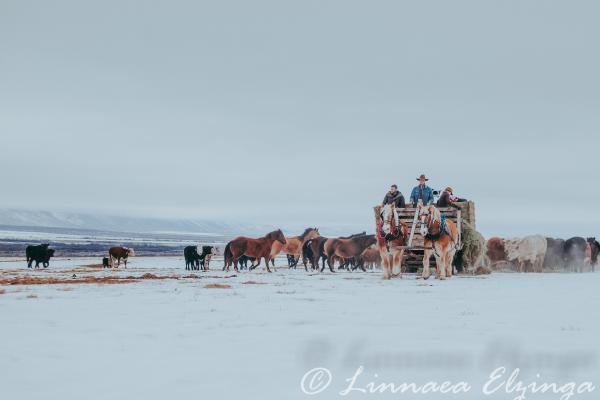 Horses need to made aware of the load they pull, but not fearful of it. When I first began working with heavy horses about 25 years ago, my dad gave me several lessons. He used to haul milk in 80 pound cans from the dairies to the creamery every day in the city of Bolsward, an ancient city-state town in the Province of Friesland, Netherlands, along the shore of the North Sea. In the summer, he singlehandedly sailed a steel vessel, as each farm along his route was also along a canal in the low country of Friesland that the Dutch had long ago extracted from the sea. There were no motors in those days; the height of the War was on, and German occupation had taken every bit of petrol for their war machine in Europe.
Horses need to made aware of the load they pull, but not fearful of it. When I first began working with heavy horses about 25 years ago, my dad gave me several lessons. He used to haul milk in 80 pound cans from the dairies to the creamery every day in the city of Bolsward, an ancient city-state town in the Province of Friesland, Netherlands, along the shore of the North Sea. In the summer, he singlehandedly sailed a steel vessel, as each farm along his route was also along a canal in the low country of Friesland that the Dutch had long ago extracted from the sea. There were no motors in those days; the height of the War was on, and German occupation had taken every bit of petrol for their war machine in Europe.
So he sailed the steel hulled sloop when connecting canals were ice free. Every day he made the route, full of 60-100 milk cans; there was no refrigeration, and milk had to be brought to the creamery quickly. When the canals froze, he used a team of spirited Friesian horses and a large wagon to do the run. The nice thing was that Friesland was flat as a board, and as a result, britchen on the harness were unnecessary; no one used them. There was no reason for the horses to hold loads back, and the occasional stop required in town was accomplished by a wagon brake—good only for stopping and parking on flat ground.
But there was one kind of hill in this part of Friesland: the drawbridges. There were many of them to accommodate the high-masted sailing vessels that used the many large canals during shipping season- a centuries-old transportation link across the Province, connecting the interior with the North Sea, and the world. The bridges were steep inclines on both sides. Dad said that you needed to get a run at them to get up to the crest of the bridge with a load.
And then there was the down side. Teamsters who knew the bridges well would run up with a perfect cadence to the crest, then slow to a crawl, balanced at the peak with their load. They didn’t want to have any more momentum on the down side, because they had no britchen for the horses to slow the load down. As a result, they had to have the horses run just ahead of the gravity of load on the down side. On a long bridge the team would be galloping by the time they reached the flat on the other side of the bridge. It became a sort of controlled runaway every time bridges were crossed. It makes me nervous just thinking about it.
Then there was the potential for other traffic. Was there someone coming up the other side of the one lane bridge? Was there a tall-masted vessel coming and the bridge was about to draw up? Knowing what I know now, I am in awe of the skill and art of the teamsters of his day.
So our lowly swale crossing in Idaho had a similar issue to bridges, but in reverse. And I had britchen. I had to slow the team to get to the bottom safely with the wagon pushing hard behind them, and then surge them forward with a lightening, a slackening on the lines indicating that they should trot briskly out of the bottom to stay ahead of the wagon behind them (that was now pushing really hard—it was still heading downhill, remember, behind them). Then, they needed to fill their collars tightly with their shoulders, because, as the heavy wagon load hit the bottom, the load would become all gravity for the climb out of the swale. I needed some momentum to help them with the trip back out of the hole, and I wanted them to smoothly transition into the pull. If they slammed into it we might snap some of the leather that transferred their energy to the pull on the wagon.
And that was what I was trying to coach my daughters in as they crossed; Madelyn, my 12 year old, was getting it, and had a good hand on the team. But tonight it was just Ethan and I by moonlight. It was under the supermoon light of a few days ago, but the moon was behind a thin mackerel sky of clouds and gave just enough light to see. As I pulled out of the swale, the team was at a full trot- just a little too fast. Three hundred head of cattle stampeded us in sheer moonlight joy. It was a lovely warm night, and they felt good. The horses felt good, too, and when the cattle rushed them, their ears perked up, and they stepped highly. The giddy feeling of all the animals cavorting under the moon in big pastures was contagious.
But something was wrong. After pulling out of the swale, and now in the flat of the meadow, I set some tension in the lines, but Jingle and Red wouldn’t respond. Instead, they broke into faster high stepping trot, and then a lope. Ethan was on the ground alongside of them, trying to get back on the wagon after opening the pasture gate, but couldn’t, as we were picking up speed. The cattle ran with us in the dim light. I strained my eyes to see something wrong up there with the team—I couldn’t see anything. I was giving Red and Jingle all the “whoa” I could with my voice (without yelling—I never did that), and tension on the lines, but to no avail.
We were loping faster now and had crossed the line from in control to out of control. Ethan was running alongside the team with the cattle, who were still dancing around and having a grand time. I could hear Ethan coaching Red and Jing to slow down. It wasn’t working. I leaned back with the lines in my hand farther, now using my body. I was pulling hard enough on them that I thought the light leather of the lines would snap any minute, and when that happens, well, God only knows how far the team would run away. Even fences might not stop them.
In the next moment, I saw the problem. Maybe it was because the moon found a thin spot in the clouds; perhaps it was because in my desperate search to find the wrong, I finally spotted it. The long rusted tube of wagon tongue had disconnected from the neck yoke, the bar that connected Jing with Red, snapped into the heavy leather just below their work horse collars. The long tongue was bouncing on the frozen ground below their front feet. The faster the team went, the higher it bounced. And the faster the team went, the more the cattle ran. It was going to be a self-fulfilling frenzy. We were caught in what was going to be a Wild West stampede.
I yelled at Ethan: “It’s the tongue! It dropped!”
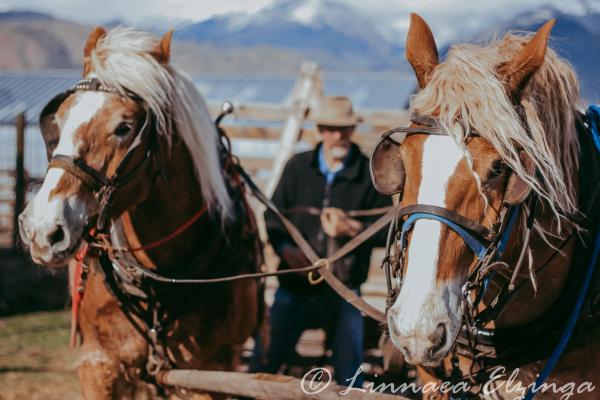
“I see it!” he shouted back. He was running full speed now alongside Big Red. Cattle surged in waves around us, bucking, tails up to the wind. I was still seated about 8 feet off the ground on one of the ton bales, putting all my weight into those lines, with my feet pressed hard on the top rails of the front headache rack. Beyond the lunging heads of Red and Jing, I knew a deep ditch was coming up, and we wouldn’t survive a crossing intact. Ethan stepped out, more to the front of Red, running sideways, with a calming voice despite his running and outreached hand.
It was enough. They began to slow, and eventually stopped. My hands were burning from taught lines, and I happily slacked the leather in my hand, as Ethan held the team by their bridles, calming them down, talking to them in quiet tones. Cattle continued to circle and stop to snort at us, hoping for more fun. Ethan grabbed the tongue, and tied it on for the night’s feeding with a number of loops of baling twine, and in a few minutes, and with a tiny squeak from my lips, we were underway again. A little farther and we reached the area I was feeding on this winter- a place in my pastures where I thought the soil critters needed the nutrients of left over hay and animal dung.
We peeled off the heavy flakes from ton bales of green and fragrant grass hay to the now quietly occupied cattle. They had their heads down, sweeping the summer green into their mouths.
The team settled down into the rhythm of the chore at hand. No PTSD today. Just the quiet jingle of trace chains as we headed the hay rack, empty, through the quiet night, on the trail back to the barn. All was well, and I was glad for the grace my team of horses had for us, fallible humans.
Ethan and I both knew what happened. When I let the team leap forward to cross the draw, my second mistake, the unsecured tongue was forced loose. It’s bolted on, but the bolt had worked loose and the safety chain that we usually keep to hold it there had fallen off. I had seen the safety chain earlier when we were hooking up but I thought we could feed without it. That was my first mistake, compounded by the next of taking them just a little too abruptly through the Lawson Creek Swale.
I had messed up, and ignored something on my preflight checklist. Like an aircraft pilot, there’s a bunch of things we check before setting out horseback or with a team of horses. But a horse isn’t an airplane, or car or pickup truck. They are our partners with minds of their own. They trust us to make sure we do our part to keep them safe. And I kick myself when I fail them.
My animals are often better than I, and deserving of my trust. I’ve had horses bring me back over twenty miles of rocky canyon country in the black of night to the trailhead without a stumble. Dogs who found cows where I couldn’t. Cows that found their way 45 miles back home after I hadn’t seen them for months. Horses stopping with just a whoa, when I stumbled and fell in the way of a 2000 pound log that would have turned me into a red smear mark on the forest floor.
It is a partnership. And it’s part of husbandry for me to live up to my end of the partnership. It’s a holistic, or all-encompassing view where we see the animals, the land, and even the living soil under our feet, as important partners in our capture of wild protein, and the wellness it brings. It humbles me, because it seems they are often better partners than I, but I’m glad they are willing patient teachers as they bring me along.
And you are part of that holism as well. It’s a connectedness with every living thing we interact with and touch. Thanks for being part of it. Thanks for trusting us with your food.
Glenn, Caryl, Girls and Cowboys at Alderspring

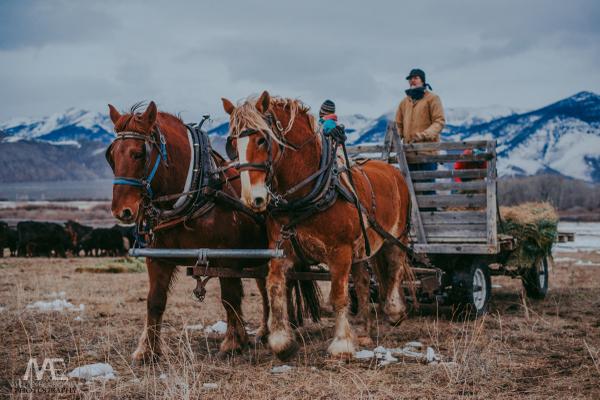
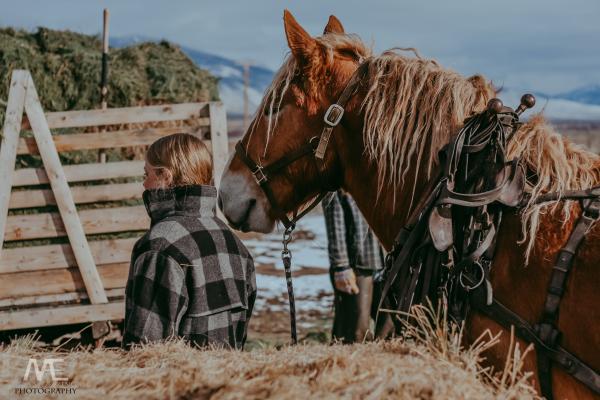
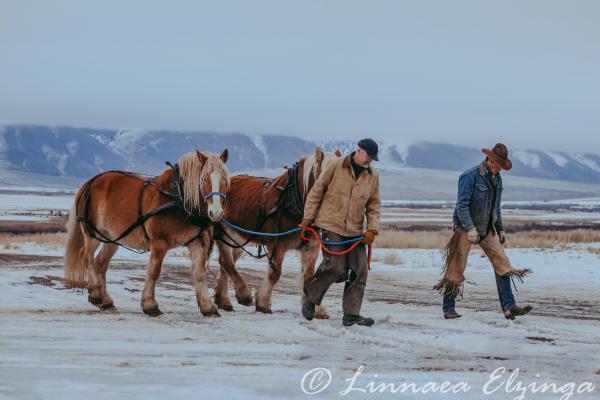
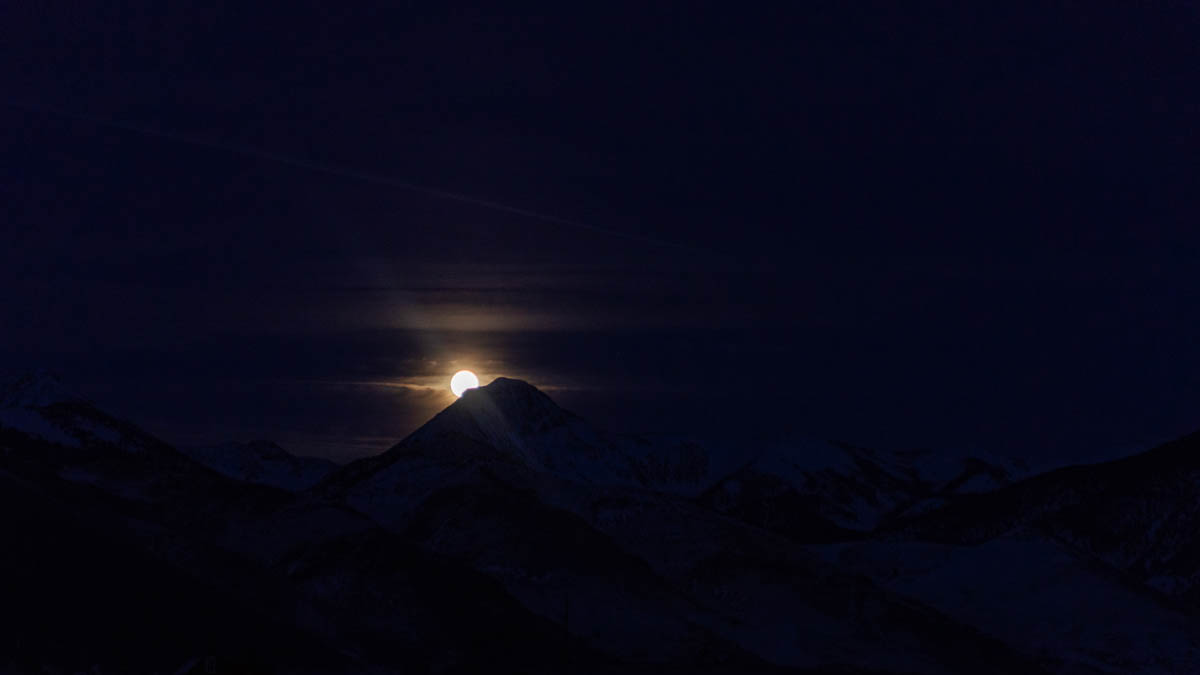

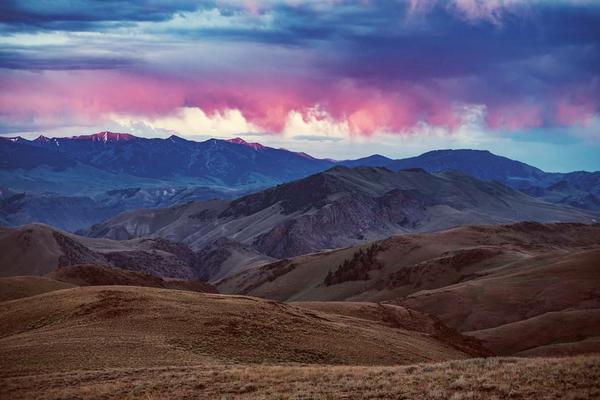
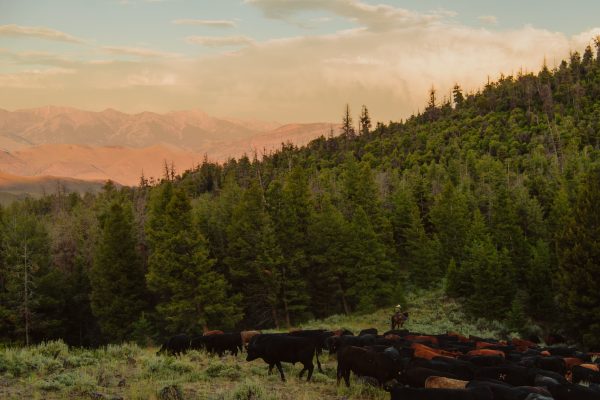
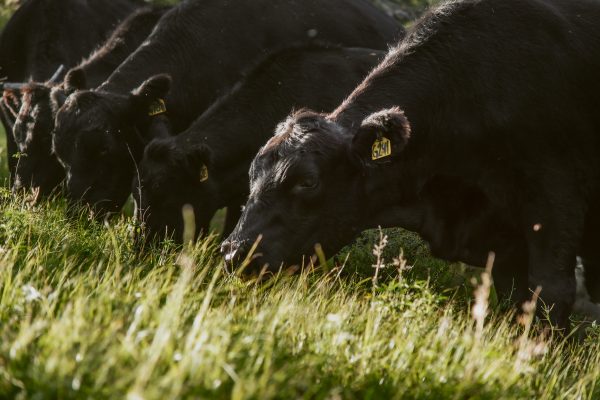
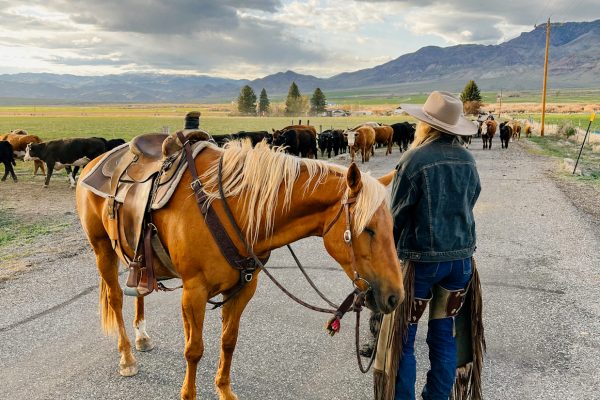
Leave a Reply